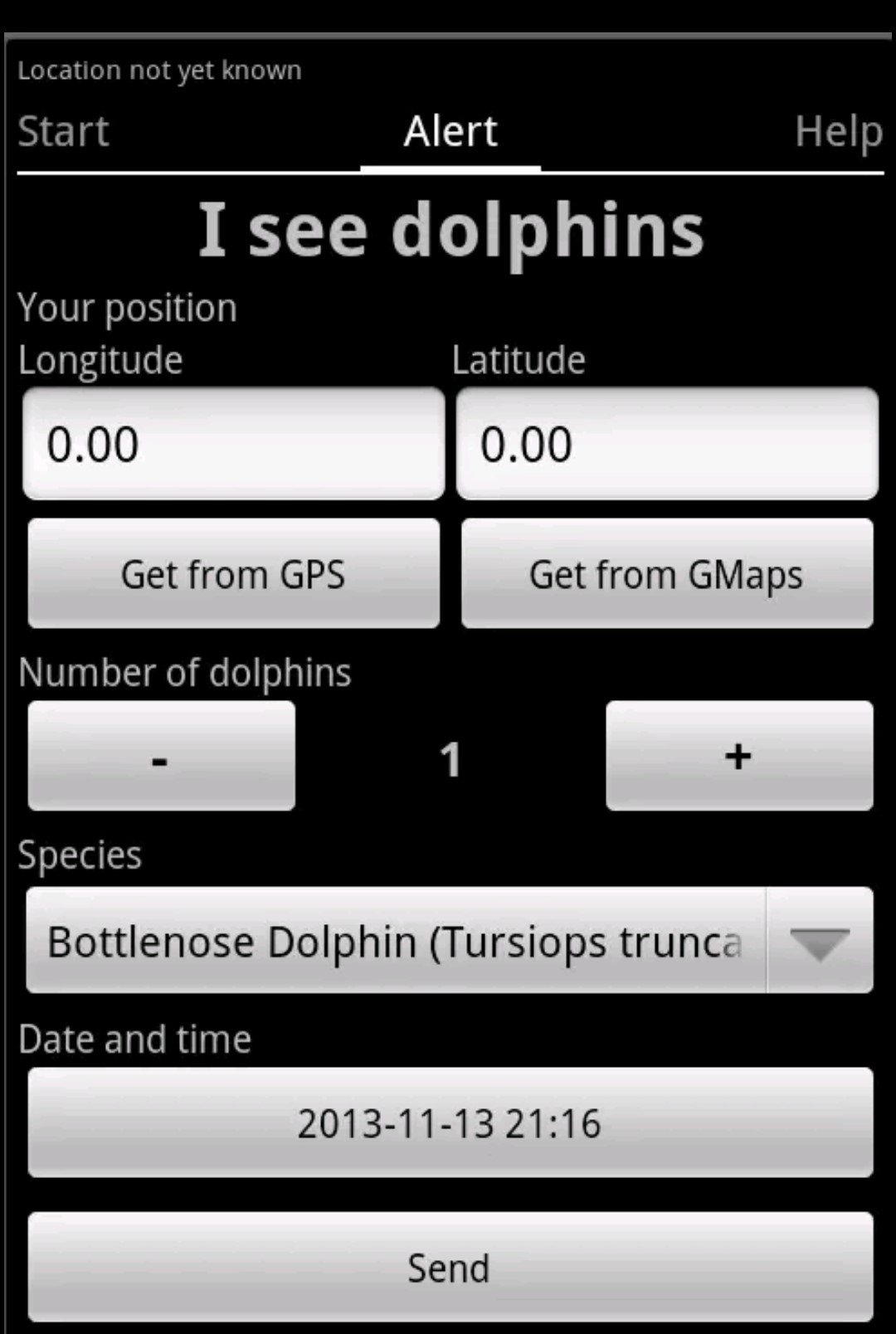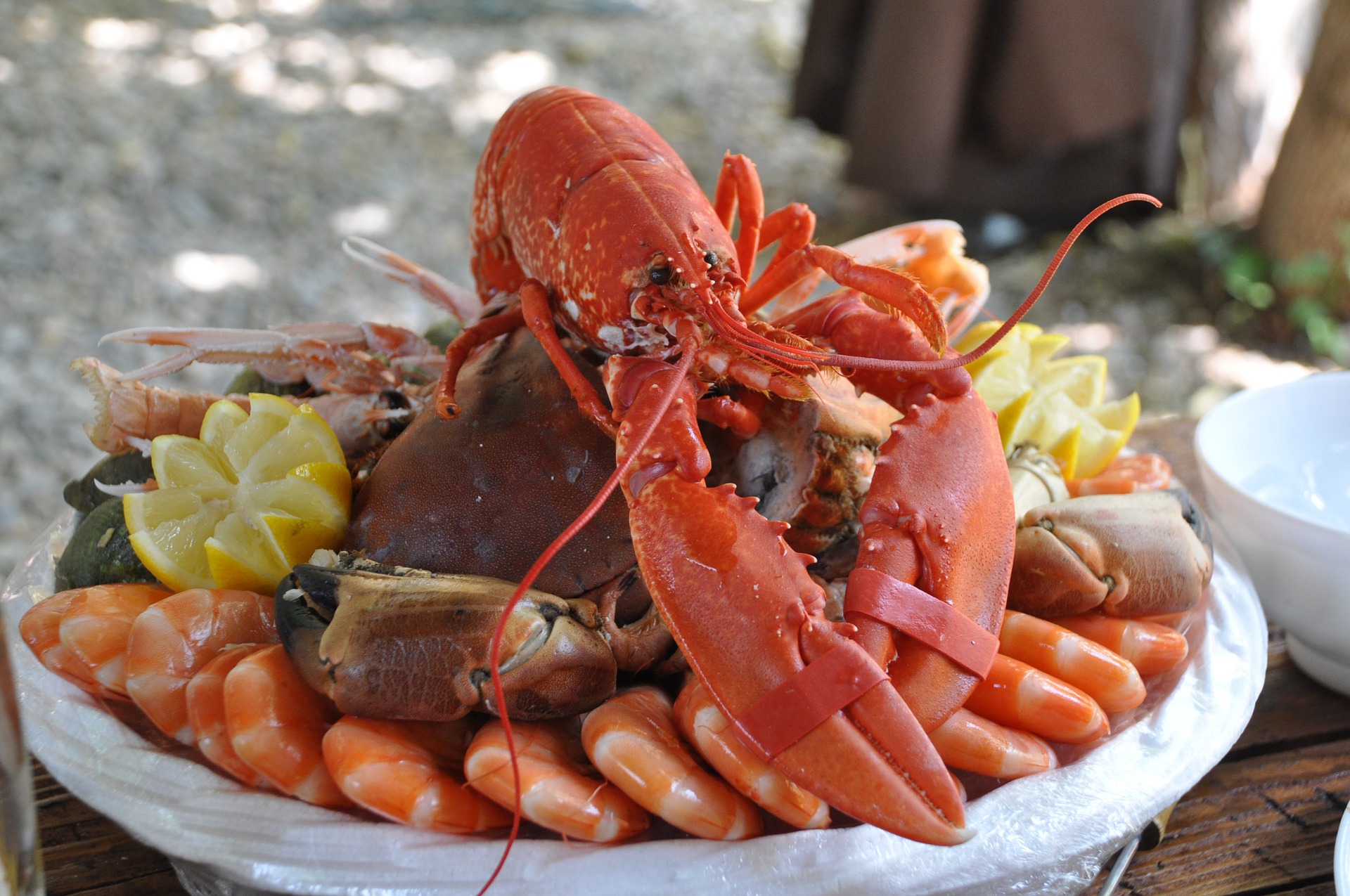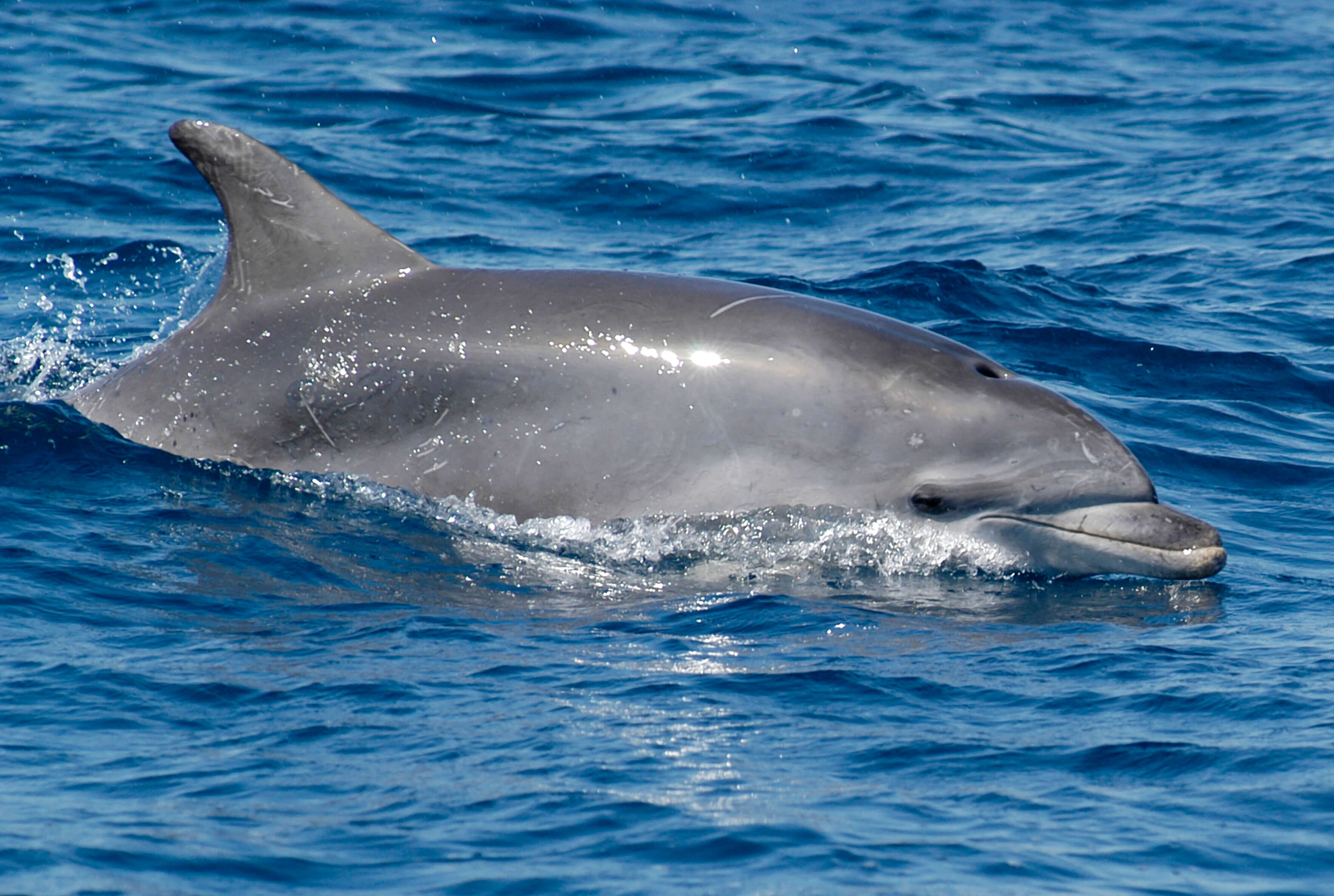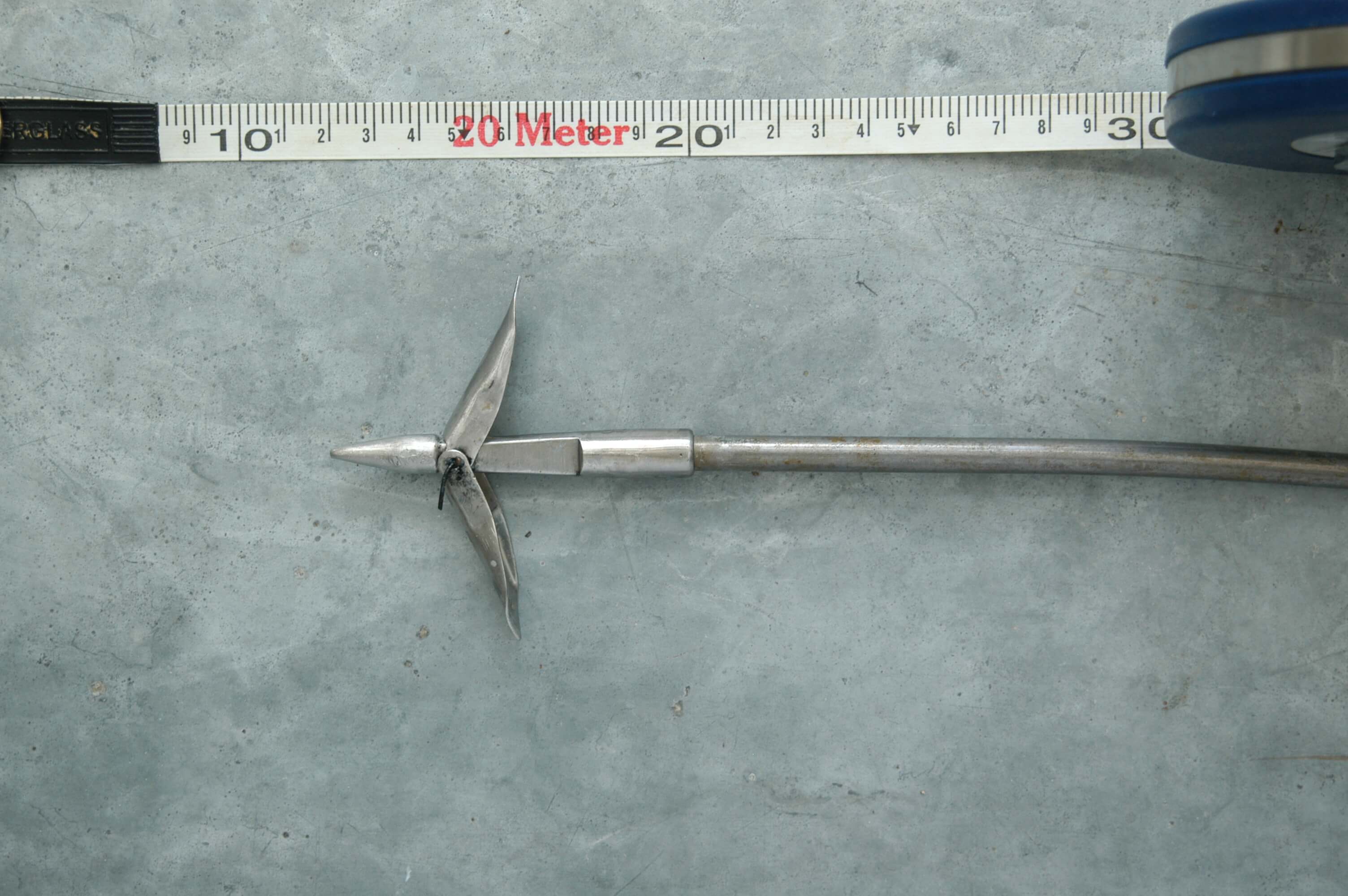Seen a Dolphin While Sailing in Croatia? Here’s How to Report the Sighting
January 20th, 2022 - Dolphin sightings reported through the CroDolphin Little app will help researchers study and protect marine mammals inhabiting the Croatian Adriatic
Ever gone sailing in Croatia and spotted a friendly dolphin swimming along your sailboat, occasionally hopping out of the water? Dolphin sightings are relatively common in Croatian waters, especially in the Lošinj archipelago where the population of some 200 dolphins is observed and tracked by the Blue World Institute.
If you’re heading to the Croatian coast this summer and happen to spot a dolphin while island hopping, you can now log the sighting with the help of a handy app named CroDolphin Little.
The app was developed by the Faculty of Veterinary Medicine in Zagreb to allow for simple and quick reporting of marine mammal sightings in the Adriatic, reports Turističke priče. Its primary purpose is to collect data on the population, movements and behaviour of marine mammals in Croatia.
Anyone can help researchers study and protect marine mammal species in Croatian waters by installing the app on their smartphone and logging any sightings of dolphins, whales or Mediterranean monk seals.
The CroDolphin app is easy to use: on the front page, tap ‘I see dolphins’; there’s a separate option to select in the unfortunate case of spotting a wounded or dead dolphin. You will then have to provide some additional information, such as location (GPS or GMaps), the number of animals you’ve seen, species, date and time.

CroDolphin little app screenshot
Every sighting report triggers a text message that is sent from the app to the expert team tracking the marine mammal population. The data is also automatically stored in the database that’s open to the public, but for the sake of animal safety, any sightings reported in the last 12 hours aren’t shown on the map.
The app is available for iOS and Android, and requires internet connection for map usage.
All marine mammal species inhabiting the Adriatic, including bottlenose dolphins, are considered endangered and have been protected under Croatian law since the 1990s. It’s forbidden to kill the animals, harass them in any way, or destroy their habitat.
If you spot a dolphin on the Croatian coast, we encourage you to report the sighting, but above all remember to observe and appreciate these wonderful animals from a distance to help keep them safe. Here’s our short guide on how to behave when you see a dolphin, and what to do in case you come across a stranded or injured animal.
VIDEO: Stunning Aerial Footage of Dolphin Family in Zadar Archipelago
February 1, 2021 – The Adriatic might be too cold for us right now, but conditions are perfect for this dolphin family, spectacularly captured gliding through glacial, undisturbed waters by an overhead drone
The Adriatic might be too cold for us right now, but conditions are perfect for this dolphin family, spectacularly captured gliding through glacial, undisturbed waters by an overhead drone
The footage of the dolphin family was captured spectacularly by keen amateur drone photographer Davor Miljkovic. Davor, who is from Zapresic, usually puts his eye for aesthetics into website design – he works as a PHP website developer for Virtus dizajn in Lanište, Zagreb and as a freelance website developer. But, he is currently taking advantage of working remotely and was able to catch footage of the dolphin family during his off time.
“I live in Zapresic but my grandmother is from island Rava, near Zadar,” Davor told TCN on 1st February 2021, two days after he posted the video of the dolphin family to his Youtube channel. “So, we have a house here by the sea. My fiance and I spend part of the winter here and we are here all summer too.”
The Zadar archipelago (in Croatian Zadarski arhipelag) is an incredibly picturesque group of islands off the coast of the city of Zadar. In addition to island Rava, off which Davor saw the dolphin family, the archipelago also consists of the islands Dugi Otok, Galešnjak, Iž, Lavdara, Ošljak, Pašman, Rivanj, Sestrunj, Tun Veli, Ugljan, Vir, Vrgada, Zečevo and Zverinac.
The beautiful stretch of islands is usually very popular with summertime visitors. It would seem that it's also popular in wintertime with visitors who live in the sea. And, of course, people like Davor who are lucky enough to catch sight of them.
For the latest travel info, bookmark our main travel info article, which is updated daily.
Read the Croatian Travel Update in your language - now available in 24 languages
Adriatic Sea Flourishes In 2020 As Waters Replenish
October 14, 2020 – Whales, dolphins and shrimp have returned to Croatian waters in greater numbers than in living memory as the Adriatic sea flourishes in 2020's quieter season
For obvious reasons, it's been an extraordinary year for everyone. Much of the news to report hasn't been the happiest. But, even in times of crisis, it's still possible to find reasons to optimistic and thankful.
In 2020, more tourists than in previous seasons have stayed away from Croatia's shoreline. However, their absence has been filled, in part, by a remarkable return of sea life. The Adriatic sea flourishes in 2020 with mammals, fish and crustaceans.
Dolphins are a wonderful sight to catch around the Croatian coast at any time, but not a great surprise – dolphins enjoy the fish-filled, crystal clear Adriatic as much as we all do. But the large whales spotted in Croatian waters this summer are quite uncommon. Dolphins filmed swimming near Ugljan island earlier this year as the Adriatic sea flourishes in 2020. You can find a link to this dolphin video above © Youtube screenshot
Dolphins filmed swimming near Ugljan island earlier this year as the Adriatic sea flourishes in 2020. You can find a link to this dolphin video above © Youtube screenshot
Researchers from the Blue World Institute are now sure that two separate whales have inhabited the Velebit Channel between August and October this year with at least one, if not both, still remaining in the area.
Of course, the wholly negative way of explaining their appearance would be to blame the uncommon occurrences on global warming. But, things may not be so clear cut. Less sailing, fewer pollutants and much fewer cruise ships in the Adriatic this year may well have made the area more inviting for the large mammals.
Key to a whale's desired place of dwelling is the food available to them. While the strict lockdown witnessed early this year struck a heavy blow on Croatia's fish markets and, in turn, the country's fishing industry, the fall in prices, the lack of demand and the reduction in fishing allowed the Adriatic to replenish. Crustaceans have also benefitted from a fallow year. Split fisherman Antonio Šunjić told Slobodna Dalmacija he sees an explosion in Croatia waters of shrimp numbers as the Adriatic sea flourishes in 2020 © Nadine Doerlé
Crustaceans have also benefitted from a fallow year. Split fisherman Antonio Šunjić told Slobodna Dalmacija he sees an explosion in Croatia waters of shrimp numbers as the Adriatic sea flourishes in 2020 © Nadine Doerlé
In an interview with Tanja Šimundić Bendić in Slobodna Dalmacija on 10th October 2020, Antonio Šunjić, the first man of the fishermen's guild of Split and Split-Dalmatia County gave first-hand witness. He attested to an increase in tuna number (a favourite of the whales) this year. He also sees an explosion in shrimp population as the Adriatic sea flourishes in 2020.
Those who have long grown from and fed off the land know well how to look after their most precious commodity – farmers leave some fields fallow during a whole season, sowing no seeds for a year so that the ground may rest and fertility return. The fallow period the Adriatic has experienced in 2020 may deliver much greater long-term wealth than the temporary inconveniences caused by this extraordinary season.
For the latest travel info, bookmark our main travel info article, which is updated daily.
Read the Croatian Travel Update in your language - now available in 24 languages.
Zagreb Veterinary Students to Learn About Marine Life on Murter
As Morski writes on the 28th of March, 2019, this weekend, the island of Murter will host the first of two sets of field work of Zagreb veterinary students within the "Blue Project - Contribution to the development of the DKU Program at VFZS" project, carried out by the Argonaut association in partnership with the Faculty of Veterinary Medicine of the University of Zagreb, as well as the Pula Marine Education Centre.
The implementation of the project started back in April 2018, and the purpose of the project is to give the Zagreb veterinary students a chance to engage in socially beneficial marine environment conservation projects. Through the projects within the classes, and in cooperation with various civil society organisations, students will learn to properly identify the needs of the community and through the courses they undertake, develop potential solutions - projects that will see them engaged in the local community, according to a report from SibenikIN.
Within this concrete project, the topics that are likely among the most interesting to the Zagreb veterinary students will be the methods and ways of monitoring populations and providing treatment to the Adriatic's protected marine animals, such as sea turtles and dolphins.
In addition to Murter, students will also visit Pula and the Marine Education Center at the Pula Aquarium in mid-April this year.
Students will develop their projects through selected mentoring programs which include but aren't limited to visiting habitats during the winter months and learning how to properly aid a sea turtle who has become too cold, learning about the friendly behaviour of sea turtles and dolphins, what to do when coming across a sick or injured dolphin or sea turtle, and what the procedure is should a dead dolphin or sea turtle be discovered.
At the workshop in Murter, the thematic workshop will focus on dolphins and students will be educated on the development of monitoring protocols, recording the occurrence of protected marine animals - dates, times, geographical positions, the number of animals, their ages, their conditions and the level of potential human impact (maritime traffic, tourism and fishing), as well as the basics of photographing these types of protected marine species.
The project aimed at the Zagreb veterinary students and their further education will go on for eighteen months, more specifically until October 2019, and is co-financed by the European Social Fund (ESF) in the amount of 854,018,21 kuna, with a total value of 1,004,727.31 kuna. The project leader is the Argonaut association from Murter, and the partners of the project are the Faculty of Veterinary Medicine of the University of Zagreb and the Pula Marine Centre. The project is being implemented in the area of Šibenik-Knin County, Zagrebačka, and Istria County.
Make sure to follow our dedicated lifestyle page for much more.
Standing Up For Croatian Dolphins
Croatian dolphins rarely excited a young Mario Stecher.
He encountered the aquatic mammal every summer during a decade-long stint as a skipper for his father’s Istria-based charter boat company.
“We saw the dolphins many, many times,” Stecher said, now 36 years old. “So often that in the end it gets boring.”
The tourists? Oh, they used to ogle and coo as the sea-faring mammals skipped ahead of the sailboat’s bow.
With the benefit of time and a brief health scare, Stecher’s casual apathy towards Croatian dolphins transformed into an affinity so strong, he wants to help them.
Together with his twin brother Manuel, Stecher is organizing the “Istrian SUP Challenge,” an exhausting five-day paddle boarding excursion around the Istrian peninsula designed to raise funds for the “Rescue of the last Adriatic dolphins” project of the German non-profit Society for the Salvation of the Dolphin.
Stand up paddle boarders from around the world will make the trip around the Istrian peninsula this May with to raise awareness — and funds — for the dolphins.

The Adriatic Sea’s last mammal needs the help.
Nearly Eradicated, Still Hunted
Croatia’s chunk of the Adriatic has about 220 bottlenose Croatian dolphins left in its stock, according to Dr. Martina Duras, of the University of Zagreb’s Faculty of Veterinary Medicine. It’s a drastic drop from the not too long ago, when three aquatic predatory mammals roamed Croatia’s shores.
The bottlenose dolphin was, in fact, one of the least prevalent. It shared territory with the Mediterranean monk seal and the short-beaked common dolphin, which came into contact with humans much more often. It led to their demise.
The monk seal and common dolphin were effectively erased from the Adriatic through concerted, often state-sanctioned killing sprees conducted by local fishermen, who saw the creatures as competitors for their catch. The misconception, unfortunately remains.
To this day, dolphins in Croatia’s Adriatic are being harpooned, shot or stabbed, according to Duras, whose “Rescue of the Last Adriatic Dolphins” project is the main beneficiary of the Istrian SUP Challenge.
All dead dolphins which wash ashore in Croatia are sent to Duras for autopsies. Over the last 20 years, 11 have been killed by humans.
“Every time it happens, we’re shocked. We ask ourselves ‘Is this really still going on?’” Duras said. “We can’t say who’s doing it, unfortunately; if it’s fishermen or someone else.”
The bottlenose dolphin now faces a newer, more banal-seeming threat, according to Duras: a boom in “dolphin watching” tourism. She recalls a recent trip to the shore where she saw four to five boats filled with ogling tourists follow a pod of dolphins.
“It’s not as harmless as people think,” Duras said.
The mammals started showing classic signs of distress: deeper dives, longer dives punctuated by brief gasps for air and generally trying to avoid the flotilla of selfie-snapping tourists following them around.
It’s a far cry from Mario Stecher’s days of summer boredom, more than 15 years ago.
From Kites To Boards
Stecher began a decade-long stint as a skipper with is father’s charter company in Istria. Mostly on a whim.
Or, as he put it: “Every 18 year old guy will say, ‘Yeah, let’s go down to the southern European coast and wear board shorts and get a tan instead of staying in cold Germany.”
An avid kite-surfer at the time, Stecher would exploit windy days to head out on the water, then set up spotlights at night to work on or repair the boat.
In his late 20s, a succession of illnesses caught up with Stecher and curtailed his active lifestyle.
First came a cancer scare, which ended up benign but left him with a lasting bone deficiency in his leg. That was then exacerbated by a broken leg in Cape Verde and a mishap which almost led to an amputation, then long odds of ever walking under his own power.
“I was not 70. I was pretty shocked,” he said. “This isn’t something you’re thinking about when you’re 28 years old.” He needed to learn how to walk again, a process that took over a year.
Kite surfing was no longer an option.
He discovered Stand-up Paddling (SUP) instead, a low-impact exercise which resembles a marriage of canoeing and surfing. (SUPs have become a common site in Croatia every summer.)
His skippering days behind him, he began taking up SUP challenges for charities and fun, along with his twin brother Manuel.
First came a 2013 circumnavigation of Germany’s Lake Constance. Then, a ring around Italy’s Lake Garda, which was their first charitable SUP challenge.
“At that time, we were absolute nobodies,” Stecher said. “Just some guys on boards nobody heard of. But we still collected money for the dolphins.” About EUR 3,000, to be exact.
Then last year, Stecher’s father announced he’d finally call it quits on his summer charter boat business in Croatia. Mario saw an opportunity to say goodbye to his youthful summers while using his passion for a good cause.
Hitting ‘Walls’ On The Water
The Istrian SUP Challenge will be held this May, starting in Barcola, just north of Trieste in Italy, and ending in Opatija, Istria.
Stecher and his brother Manuel will be joined by three other stand-up paddle boarders from around the world — another German, a Slovenian and a Canadian.

The team plans on paddling 8-12 hours a day over the span of five days — as weather allows. They’ll pause every hour to eat a cereal bar then gulp down isotonic drinks to keep the hydrated.
Experience suggests it won’t be fun.
“There are moments where you can’t say which muscle hurts most because stand up paddling is a full body workout,” Stecher said. “From hour to hour the pain is changing. From muscle to muscle. Sometimes you feel it in the neck, then you feel it in the shoulders.”
They’ll have camping gear and provisions in tow to spend their nights ashore in tents. Stecher holds out hope for a “shuttle boat,” which will provide a floating storage locker and hotel, though nothing has been settled concretely.
Their days will start early, a tactic Stecher devised remembering his days as a skipper, when the northerly maestral winds would kick up during summer afternoons.
“We have the best chances to go without wind if we start before sunlight,” he said. The sooner they start, the sooner the pain will arrive.
Stecher likened it to the mythical “wall” often discussed by marathon runners — an invisible barrier in which both mind and body demand you quit.
“The pain gets bad enough you say, ‘C’mon guys, this was a f------g stupid idea. Let’s get on the coast and have a beer. This was a good workout and now let’s go home,’” Stecher said.
Helping The Clever, And Lucky, Bottlenose
Stecher hopes to raise EUR 5,000… preferably more.
The paddlers themselves will shell out about EUR 2,500 themselves for the trip, but wouldn’t mind donations or sponsorships to cover some of the costs (donors looking to sponsor the team can email Stecher directly or contact them via their Facebook page).
The focus, he added, should be on the dolphins and their environment — not his travails or the ensuing body aches. To help a creature that, by most accounts, could have died out alongside the common dolphin and monk seal.
The bottlenose dolphin remain in Croatia thanks to a common misconception — a bit of subterfuge leading to a foolish tale repeated by locals.
Bottlenose dolphins were often seen circling a school of fish, then driving them into fishermen’s nets. It may have saved them.
Locals dubbed them “dobri dupini”, or “good dolphins”, under the misguided notion dolphins were helping humans catch more fish.
Duras of the University of Zagreb said the dolphins had zero interest in helping the fishermen. The clever creatures used the nets as a trap, chasing the school of fish into a corner before picking them off.
The bottlenose dolphin’s demise would spell trouble for the Adriatic, Duras added, as it’s a key apex predator.
“You have to have that top creature in the system,” she said. “You can’t have a lot of fish without a predator to create balance in the system.”
Stecher, again fed by time and perspective, doesn’t find dolphins boring anymore.
“You feel that these animals are so clever and so important for us to have in this environment,” he said, recalling watching them skip ahead of a sailboats’ bow. “It’s an amazing animal that’s not just swimming in front of you, but swimming in front of you and watching.”
To donate to the Istrian SUP Challenge, click here.
To help out the team, contact Stecher at This email address is being protected from spambots. You need JavaScript enabled to view it. or the twins’ Facebook page.
You can read more about dolphins in Croatia here.
Common Dolphins Might Be Back In Croatia!
July 26, 2018 — Croatia may be experiencing the return of a familiar friend, decades after being fished and slaughtered out of this chunk of the Adriatic Sea.
Sad Scenes as Dead Dolphin Found Near Pag
Sad news as one of man's favourite animals is tragically found dead near Pag.
Dolphins at Play: Lively Waters of North Dalmatia (Photos)
April 28, 2018 - The Blue World Institute came out with a new batch of photos featuring the friendliest residents of the Adriatic
19 Dolphins Spotted Near Silba Island (Photos)
Some friendly faces and familiar fins have been spotted near the island of SIlba
How to Behave When You Spot a Dolphin
Basic etiquette to respect our wildlife.



